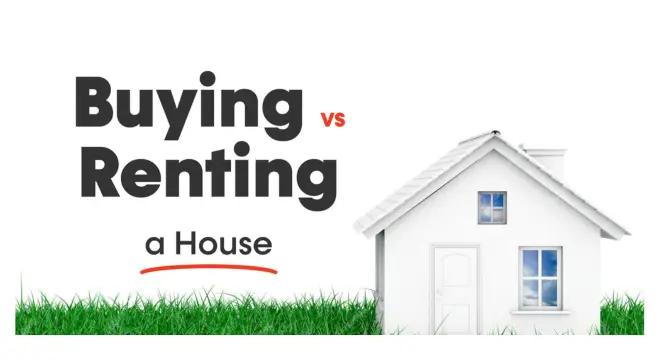Mortgage Rates Won’t Drop Below 6% Soon, Experts Predict
I’ve been watching mortgage rates for over two decades, and I have to tell you — the numbers we’re seeing right now are hard to ignore. Rates have been hovering above 6% for years, and the latest forecasts from the Mortgage Bankers Association suggest they’re not coming down anytime soon. If you’re thinking about buying a home or refinancing, this isn’t just a minor detail — it changes how much you’ll pay every month and how you plan your next move.
In this article, I’ll walk you through why rates are staying high, what it means for buyers like you, and how you can navigate this environment without losing your head — or your budget.
Current Mortgage Rate Landscape
I want to start by giving you a clear picture of where mortgage rates stand today, because understanding this is the first step in making smart decisions. Right now, the average U.S. 30-year fixed mortgage rate is hovering around 6.27% according to Freddie Mac. That might not sound shocking at first, but remember — we’ve been stuck above 6% for three straight years. For anyone planning to buy or refinance, that’s not a short-term blip; it’s a new reality you need to account for.
Here’s what that means in practical terms:
- Monthly payments: A typical mortgage payment for a median-priced home is roughly $2,067 per month. That’s slightly down from the peak, but it’s still significantly higher than what buyers were paying just a few years ago.
- Comparing loan types: If you’re looking at a 15-year fixed, you’ll pay higher monthly amounts but save on total interest. Adjustable-rate mortgages (ARMs) may start lower, but they come with more uncertainty if rates rise again.
- Why this matters to you: Even small differences in interest rates or loan terms can add thousands to your lifetime payments. Being aware of this helps you make choices that won’t come back to bite you later. If you’re considering taking the plunge with a 6%+ mortgage, it’s worth understanding how to get approved for a home loan before you start house hunting.
For a detailed look at the current national averages and trends, you can check out the Freddie Mac data.
Why Rates Likely Won’t Fall Below 6% Soon

Now, you might be wondering, “Will these rates ever drop back to the comfortable 4–5% we saw a few years ago?” Based on what the experts are saying, probably not anytime soon. Mike Fratantoni, the Chief Economist at the Mortgage Bankers Association (MBA), projects that 30-year fixed rates will stay in the 6%–6.5% range through 2028. That’s a multi-year horizon, not a short-term forecast.
Here are the main reasons why rates are staying high:
- Rising federal deficits and fiscal pressures: The government is borrowing more, and that pushes long-term rates up.
- Elevated long-term inflation expectations: Even if the Fed cuts short-term rates, inflation expectations keep mortgage rates from dropping.
- 10-year Treasury yield projected above 4%: Mortgage rates usually track Treasury yields. When those yields stay elevated, so do your borrowing costs.
In short, even if the Federal Reserve cuts short-term interest rates a few times over the next year, it’s unlikely to make a significant dent in long-term mortgage rates. For you as a homebuyer or someone refinancing, that means you should plan your budget and strategy with 6%+ rates as your baseline, not a temporary spike.
Regional Differences in Housing Market Impact
I know it’s tempting to look at the national average and assume your local market follows the same trend, but that would be a mistake. Where you live can drastically change how these high mortgage rates affect you.
- Sun Belt markets (Florida, Colorado, Arizona): Home prices have been declining in these areas recently, thanks to increasing inventory. If you’re buying here, you might find more negotiating power, but competition is still tight in desirable neighborhoods.
- Northeast & Midwest (NY, NJ, CT, IL): These regions are seeing price appreciation because supply is tight and construction faces challenges. Even with 6%+ mortgage rates, buyers may have to pay a premium to secure a home.
- Inventory matters: Rising local inventory can ease affordability, while low inventory pushes prices up. That means two buyers in different states might face completely different monthly payments on similar homes.
Implications for Homebuyers and Refinancers
So, how do these rates and regional differences actually affect you? Let’s break it down:
- Affordability challenges: Even with slight declines in median payments, mortgage costs are still higher than five years ago. Planning your budget carefully is non-negotiable.
- Loan adjustments: Many buyers are shifting to adjustable-rate mortgages (ARMs) or FHA loans to manage monthly payments in this high-rate environment.
- Other costs: Don’t forget property taxes, insurance, and maintenance, which can add hundreds of dollars to your monthly obligations. Even if you’re currently a homeowner, staying informed about mortgage obligations is crucial — especially since millions of Americans are living without a mortgage and facing financial pitfalls.
- Opportunities: Temporary dips in rates or refinance spurts can create windows to save money — but timing is everything.
Here’s a simple example of how small rate changes can affect monthly payments:
| Loan Amount | 6% Rate | 6.5% Rate | Difference per Month |
|---|---|---|---|
| $400,000 | $2,398 | $2,528 | $130 |
| $450,000 | $2,698 | $2,841 | $143 |
| $500,000 | $2,997 | $3,145 | $148 |
This shows why even a half-point difference matters when planning your home purchase or refinance.
Forecast for Home Prices and Housing Supply

Looking beyond rates, it’s equally important to understand how home prices and supply are evolving:
- National trend: The MBA predicts that home prices will decline for several quarters, then return to modest growth by late 2027.
- Inventory impact: Rising supply is putting downward pressure on prices in some regions, giving buyers more options.
- Regional specifics: Again, the Sun Belt sees declines, while the Northeast and Midwest continue to grow due to tight inventory and demand.
Understanding these dynamics can help you time your purchase and decide whether it’s worth waiting for a price dip or acting now before rates climb further.
For real-time data and projections on housing supply and prices, you can check Zillow’s Market Reports.
Strategic Options for Buyers in a 6%+ Rate Environment
If you’re feeling a bit overwhelmed by the idea of mortgage rates staying above 6%, I get it — I’ve guided countless buyers through similar environments, and it can feel like every decision carries extra weight. The key is to focus on practical strategies that give you control.
- Loan type considerations:
- Fixed-rate mortgages give you certainty, locking in your monthly payment.
- Adjustable-rate mortgages (ARMs) can start lower, which might help if you expect your income or home equity to grow over time.
- FHA loans or other government-backed options can reduce upfront costs, especially if your down payment is limited.
- Budget strategies:
- Increasing your down payment by even a few percentage points can lower your monthly payment significantly.
- Improving your credit score before applying can help you qualify for slightly better rates — every fraction of a percent counts.
- Rate lock and refinance timing:
- Consider locking in your rate as soon as you’re ready to move forward. Waiting for an uncertain dip might cost you more than acting now.
- Keep an eye on temporary drops — if rates ease, short-term refinance opportunities could save you money. For buyers navigating high rates, learning from experts like Morgan Roberts about secure home mortgage strategies can make a big difference in managing payments and protecting your investment.
Looking Ahead: Expert Predictions for 2025–2028

I know you’re probably asking yourself, “Will this situation improve anytime soon?” Based on the forecasts I’ve reviewed, it’s realistic to plan for a long-term environment where rates stay elevated.
- MBA’s projection: 30-year fixed mortgage rates are expected to remain in the 6%–6.5% range through 2028.
- Fed policy: Short-term rate cuts are likely only occasional; long-term rates will stay elevated due to inflation expectations and fiscal pressures.
- Potential scenarios:
- Inflation spikes: Rates could climb even higher, especially if the economy overheats.
- Housing demand changes: Slower demand could ease price pressures but might not bring rates down below 6%.
- Regional variations: As we’ve seen, Sun Belt markets may soften while Northeast and Midwest markets hold firm.
By understanding these scenarios, you can plan your home purchase or refinance strategy with confidence instead of hoping for unpredictable swings. For ongoing expert forecasts and data-driven insights, I rely on Forbes’ mortgage rate projections.
Decision Checklist for Prospective Homebuyers
If you’ve made it this far, you’re ready to make a move — but the question is, what should you actually do in this 6%+ mortgage environment? Here’s a simple checklist I use with clients, and it can help you think through your next steps:
- Evaluate affordability: Look at your monthly budget and factor in mortgage payments at 6%–6.5%, plus property taxes, insurance, and other recurring costs. Don’t assume a rate drop will rescue your plan.
- Compare loan types: Weigh ARMs, fixed-rate mortgages, and FHA loans to see which aligns with your financial goals and risk tolerance.
- Consider regional trends: Check your local market — is inventory rising? Are home prices softening or still climbing? This can influence timing and negotiation power.
- Decide your timing: Based on the above factors, determine whether buying now, waiting, or refinancing later makes the most sense.
This structured approach gives you control rather than leaving your decisions to chance — a step most competitors miss.
Final Notes
Before you act, a few realities to keep in mind:
- Rates vary: Your mortgage rate depends on your credit, loan type, location, and the lender you choose.
- Not personalized advice: This article is for general guidance. Always consult a mortgage professional for decisions specific to your situation.
- Mortgage rates are only part of the picture: Don’t forget taxes, insurance, maintenance, and other costs when planning your purchase.
If you found this guide helpful, I’d love to hear your thoughts — leave a comment below and share your questions or experiences. Also, for more in-depth, practical tips on navigating the housing market, check out my website Build Like New — I post guides, checklists, and expert insights that make tough mortgage decisions a little easier.
Disclaimer: Mortgage rates vary by lender, credit, and location. This content is for general information only and is not personalized financial advice. Always consult a professional before making mortgage decisions.


